A Social Learning Platform
Learning is inherently a social phenomena. People learn from each other. Whether you're watching a video of a lecture, reading a book someone wrote, or working with a colleague on a problem, all knowledge is built upon knowledge we acquire from others. I saw this every day at the Flatiron School campus. Students helping each other learn. That magic of the school was our facilitation of social learning. Our online learning platform had to do the same. First and foremost Learn.co had to be about people learning together.
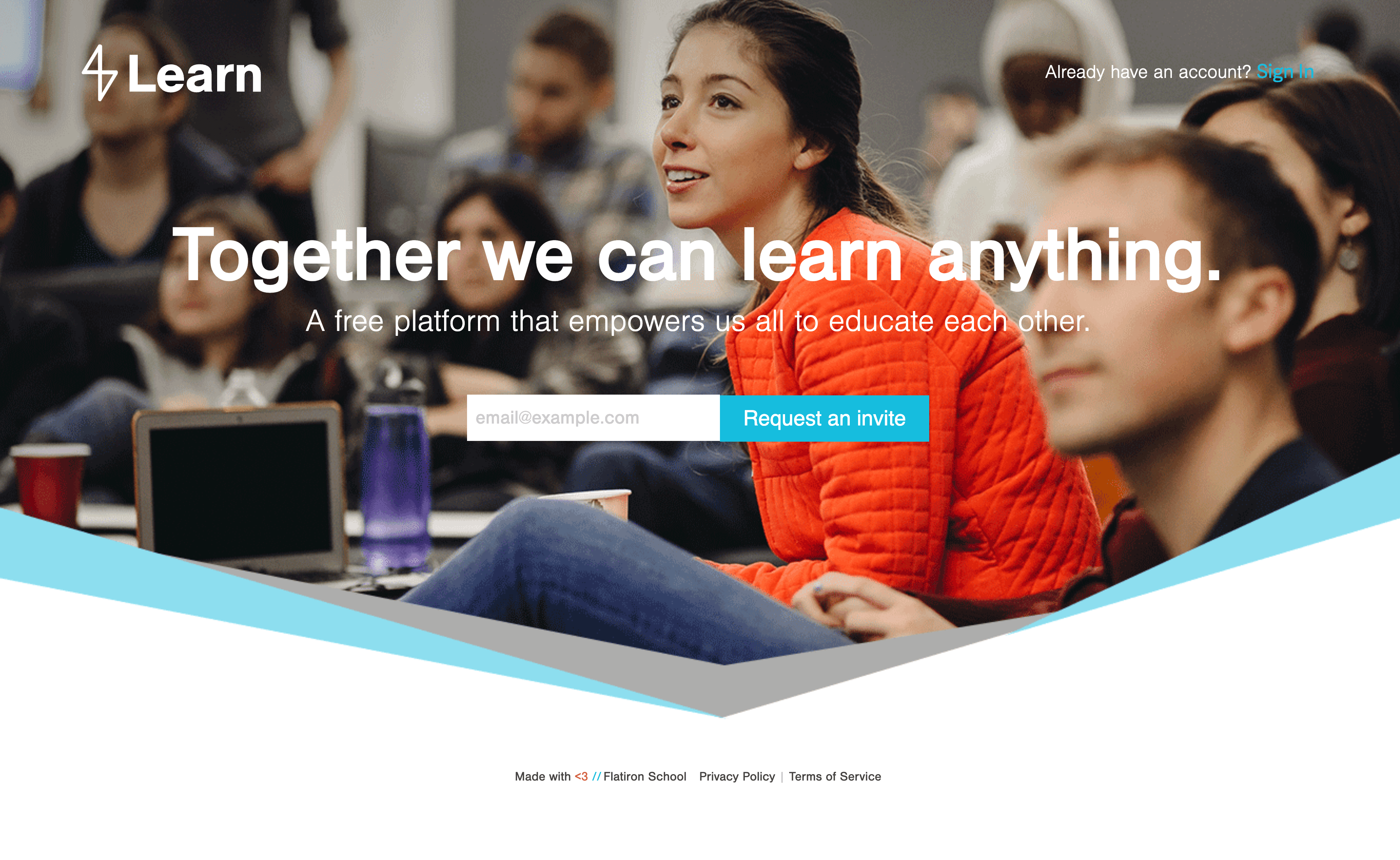
It always struck me as odd that you don't see social features on learning platforms. Given that we've all experienced studying together, asking teachers and friends for help, and sharing notes, how are all these activities suddenly stripped out online education? I love Khan Academy, but unlike Wikipedia, it doesn't get better the more people use it. When building on the internet, you want to leverage community and activity to improve experience. With Learn.co we did this in 4 ways, allowing you to ask a question in real-time, coordinate and attend study groups, pair program with others, and read and write blogs. These features are what made learn special and to this day I have not seen them replicated on any learning system I've seen.
Ask a Question
Perhaps the most obvious of features, Learn.co allowed you to ask a question to the rest of the community and faculty whenever you wanted. There was a good chance that someone else was learning around the content you were on, so if you were stuck or confused, you could simply ask a question. Anyone likely to be able to respond would get a notification that there was a new question and you could have a chat. After all, being able to explain a concept to another person is the best reinforcement of that knowledge. Everyone involved benefited from the exchange. Plus, you made a new friend.
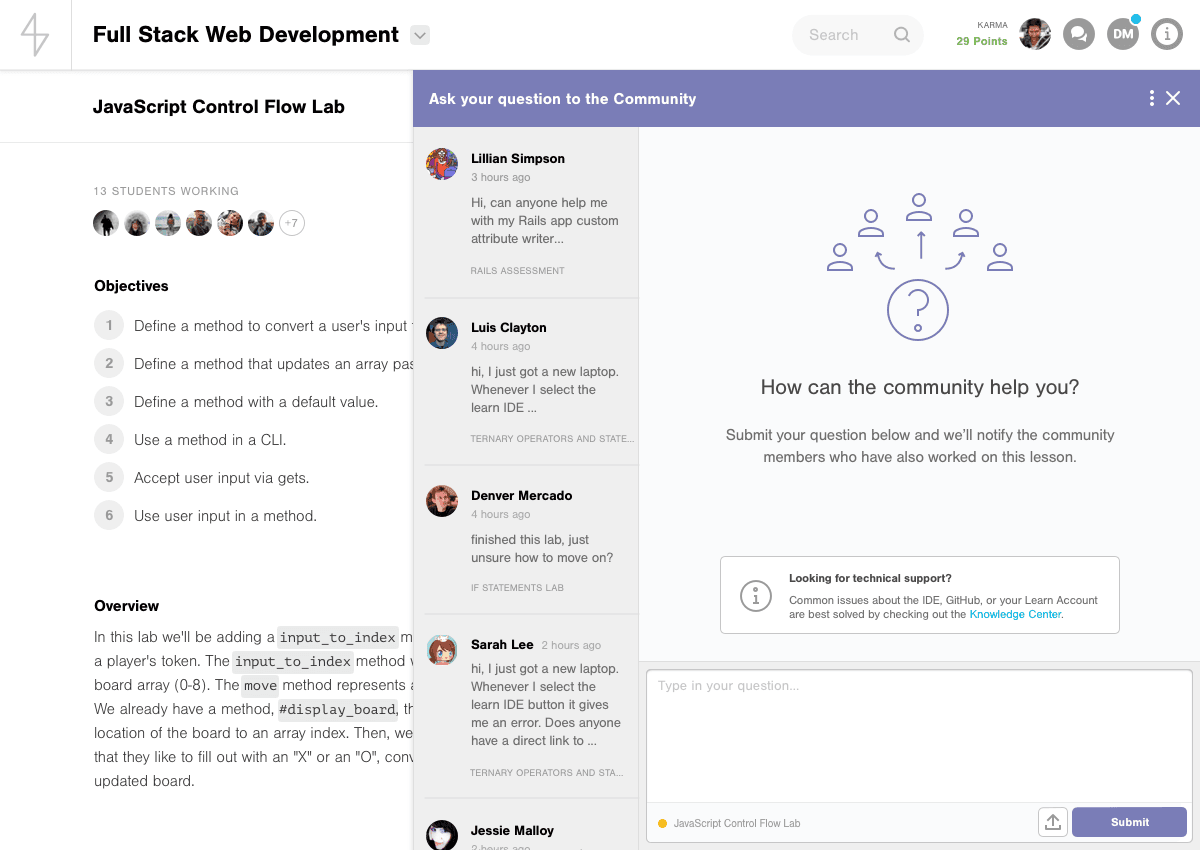
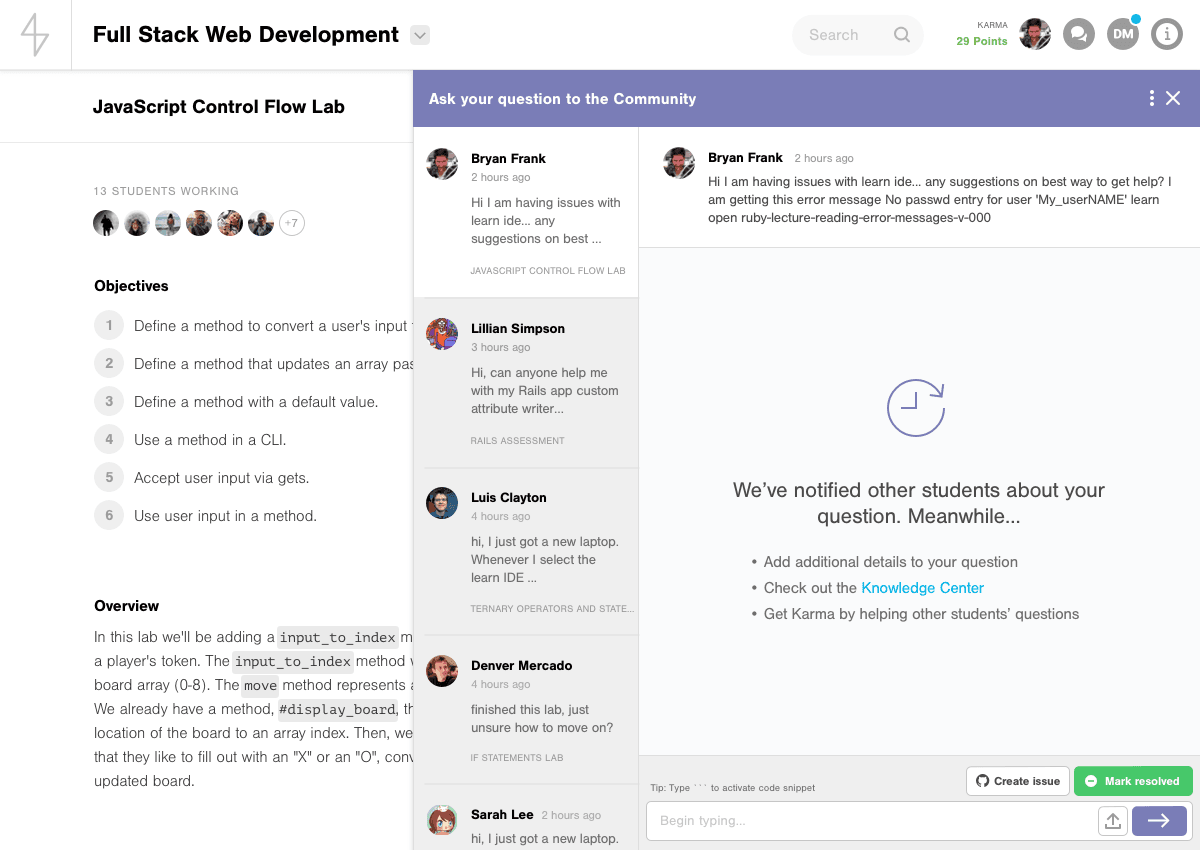
From the lesson page you could toggle the ask a question feature. You typed in your question and it became a new thread for the community. We even piped the question as a thread in our community Slack. A common them on Learn.co was integrating the platform deeply within and into other platforms such as Github, Slack, and more.
We had faculty staffing this chat almost twelve hours a day so there was generally someone knowledgeable around to answer it. But they always gave it some time to propagate to the other students because that's what we really wanted, the splendid serendipity of people helping each other.
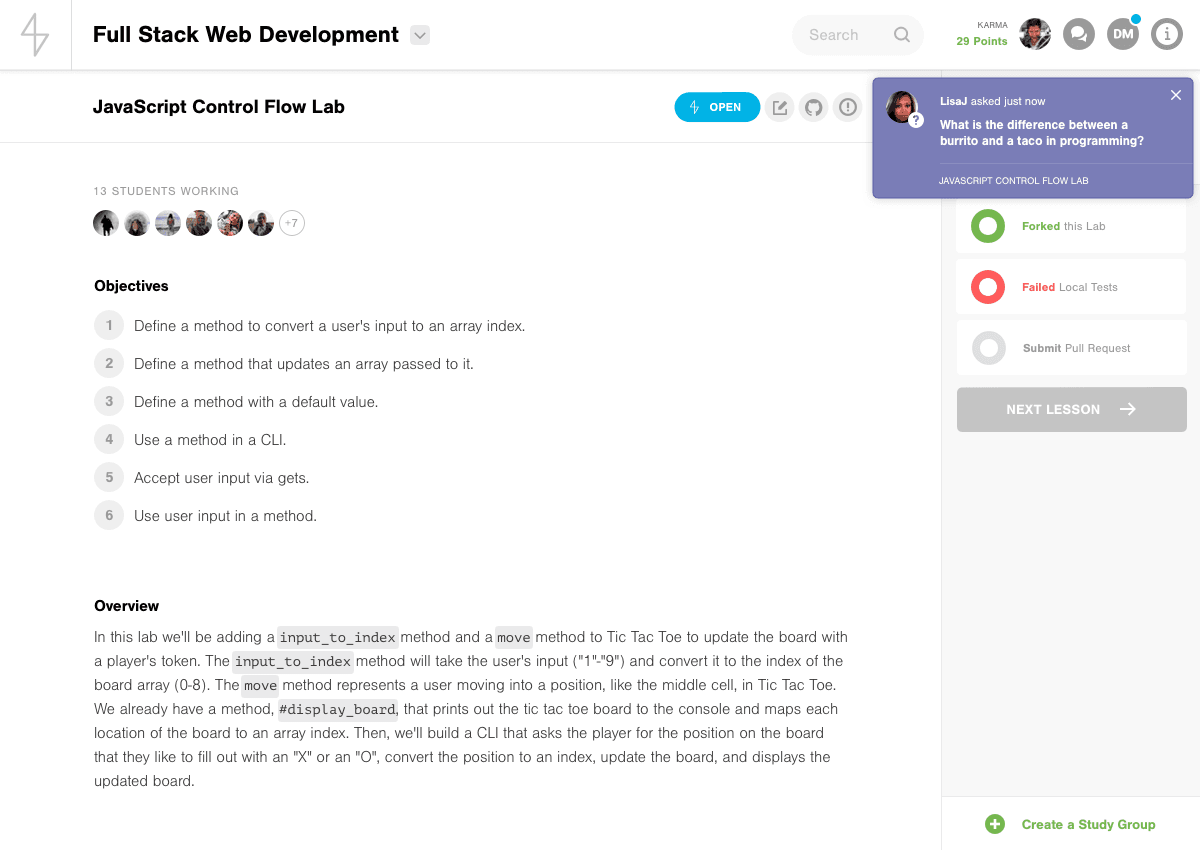
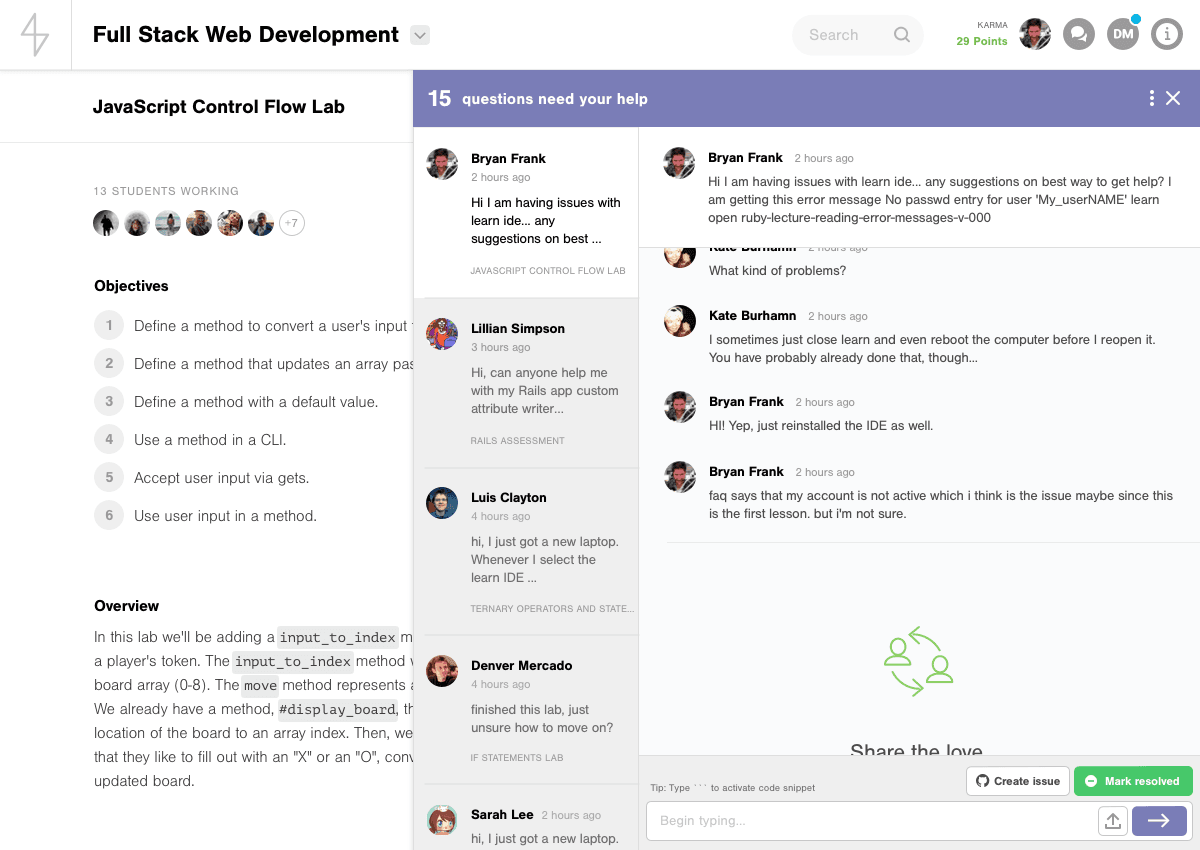
Each question was tagged with the lesson it was asked from so that we could only notify people that were around that lesson in their own learning. When opened the ask a question sheet, you could see all the open threads, and jump in and chat with whatever topic appealed to you. It was that simple. We averaged hundreds of ask a question chats a day. It motivated people to learn during peak hours when there was a lot of activity. It allowed you to read other peoples answers to question. We had an archive of common questions for each lesson. The value this feature delivered was immense. How it is not just a staple concept on learning platforms is beyond me. At best other platforms send you to a discord or a forum but none that I've seen deeply integrate the chat experience on to the platform.
Study Groups
We all remember leaving a class utterly confused and finding your friends, or in moments of desperation, the person right next to you, and asking them to get together to study. There's an entire show based around the premise of a study group. The social bonds formed in learning groups basically define the friends we made in school. It seems so simple.
On any learning website, have the ability to create a study group around the topics your learning. Promote created study groups to other students directly on those relevant lesson pages. Give them a Slack, Discord, Zoom, or Google meet to use. Voilà, you've helped people learn together.
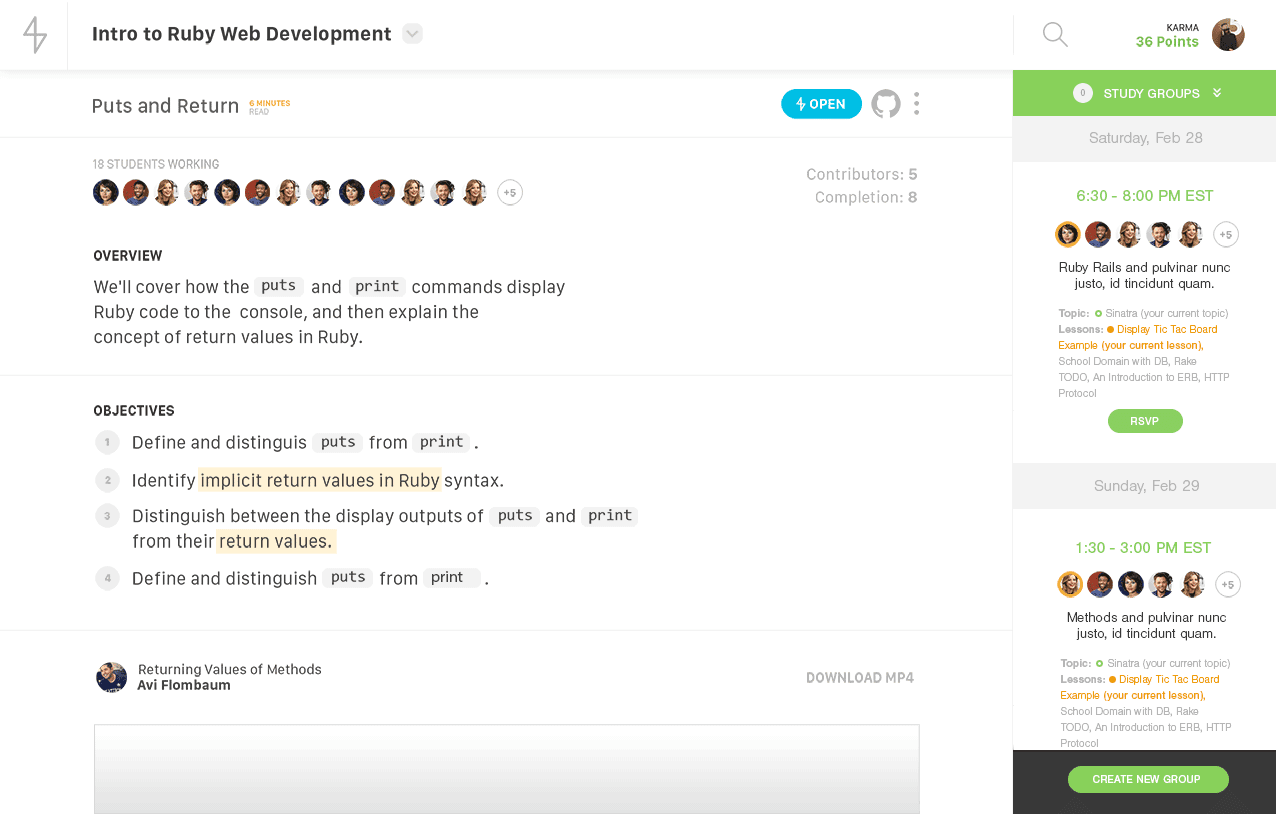

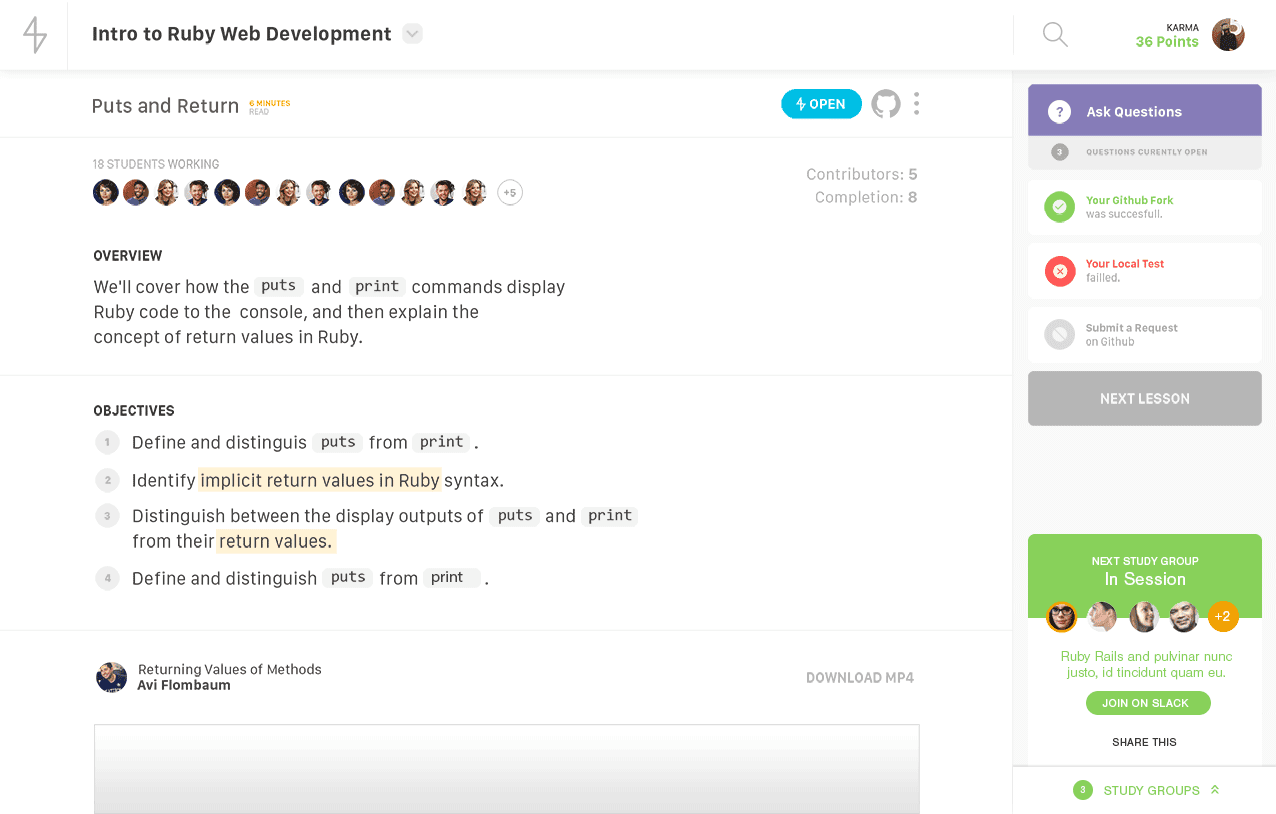
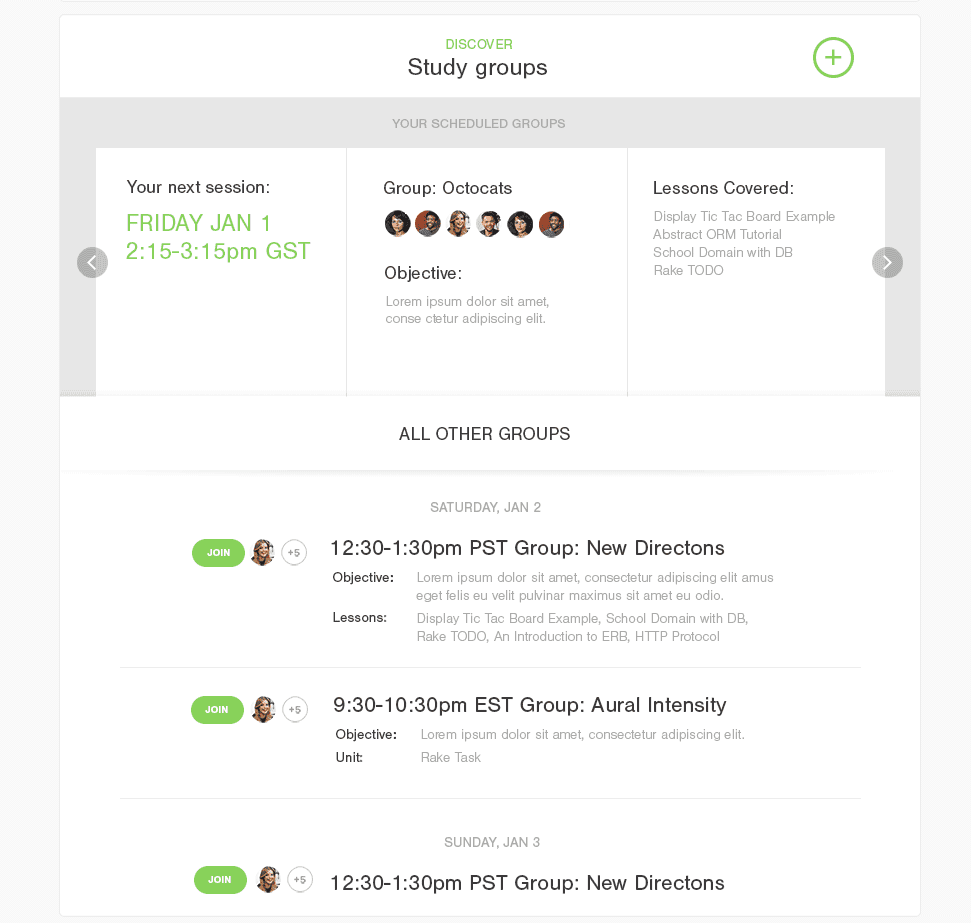
Hundreds of study groups were made a week with an average attendance of 4 people. We would host official study groups led by instructors. In fact, study groups entirely replaced the idea of a live lecture.
Lectures present a topic to a student. It's a one-to-many relationship. One person stands in the front of the room or shares their screen and disseminates knowledge to the best of the ability to the group. At best, you understand everything they are saying. Maybe you already understood 25% of it and that time in the lecture is just a reinforcement. More likely, a good part of the lecture is confusing and that time is wasted or counter productive. We know this is true because videos of lectures are more effective than live lectures. The reason is because you can pause a video and re-watch confusing sections.
A study group on the other hand is a many to many relationship. You come to ask your question. You come to listen to others. You come to help others. Every moment of a study group is valuable because of it is inherently driven by what the student wants to know rather than what the teacher needs to teach. Use asynchronous material like lecture recordings or better yet, text, to give people information. Then use live, synchronous interactions like real-time question threads or study groups to teach.
Pair Programming
One of my favorite parts about our campus was watching students code together, working on some hairy bug, and then figuring it out and celebrating. That feeling of getting through something together is such a valuable learning moment. You remember not just the concept, but the moment you learned the concept. And again, all these social mechanics allow students to form bonds with each other.
How do you recreate this online? When the platform detected two people on the same lab page we popped up a message informing them of a potential pairing opportunity.
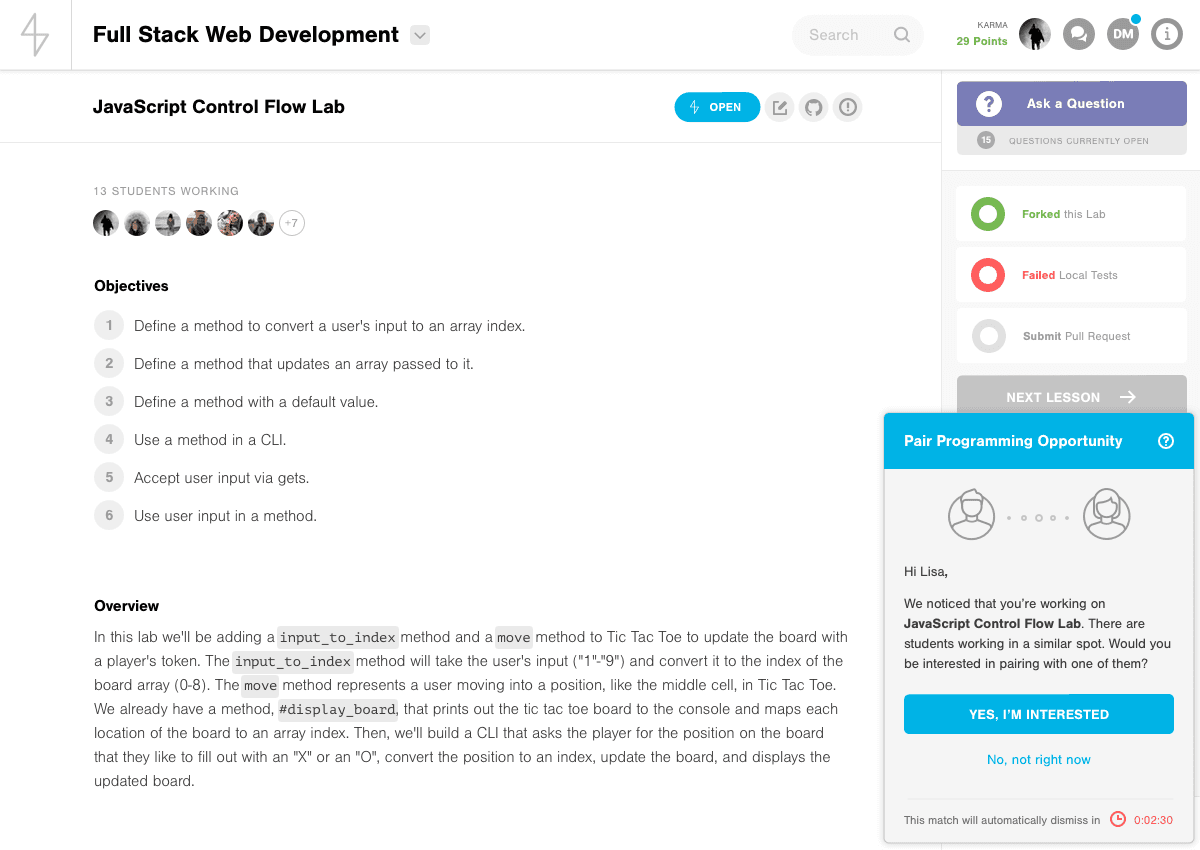
If they were available to pair, the interaction continued, we put both students in a chat together and gave them the option to continue on platform, on Slack, or on Zoom or Meet. They could work together for as long as they wanted.
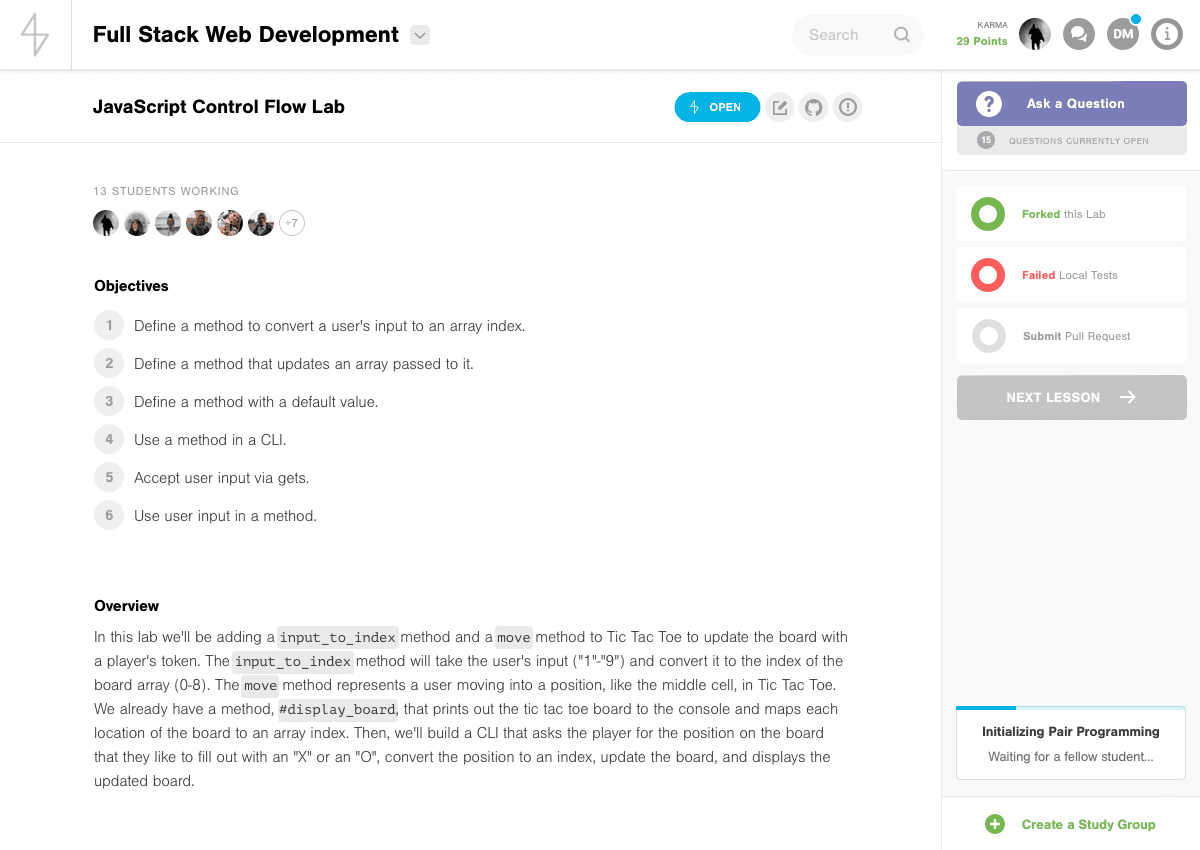
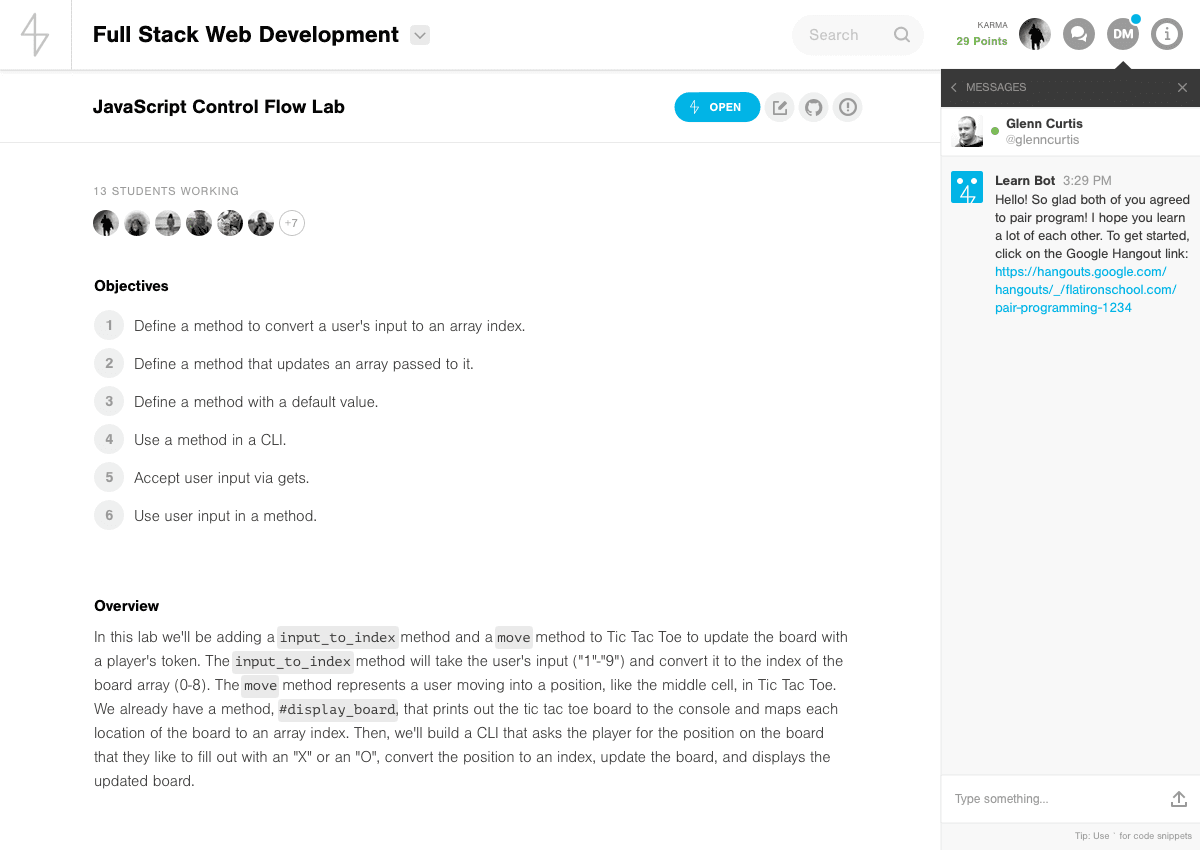
Instead of trying to cordinate contrived group work, we leveraged technology to detect when group work made sense and was available. The more people learning, the more pairs we could form. The more times you paired, the more learning friends you had. You then didn't even need the platform to pair, you just needed to message your friend (another feature the platform supported natively was direct messaging and a friend graph).
Blogging
So far every social feature relied on synchronous interactions for the most part. You had to be present to respond to a chat. You had to attend the study group. You had to be available to pair. The final social learning feature we implemented was an integrated blogging platform.
Wehn you joined Learn.co, we bought you a domain and set up a blog for you hosted on Github Pages. You then had weekly blogging assignments. We wanted you to write about what you were learning. Not only was this a valuable learning mechanic for the writer, but it created a plethora of content for the community to leverage. To this day, I still google programming concepts and find a Flatiron student's blog post on the first page of results.
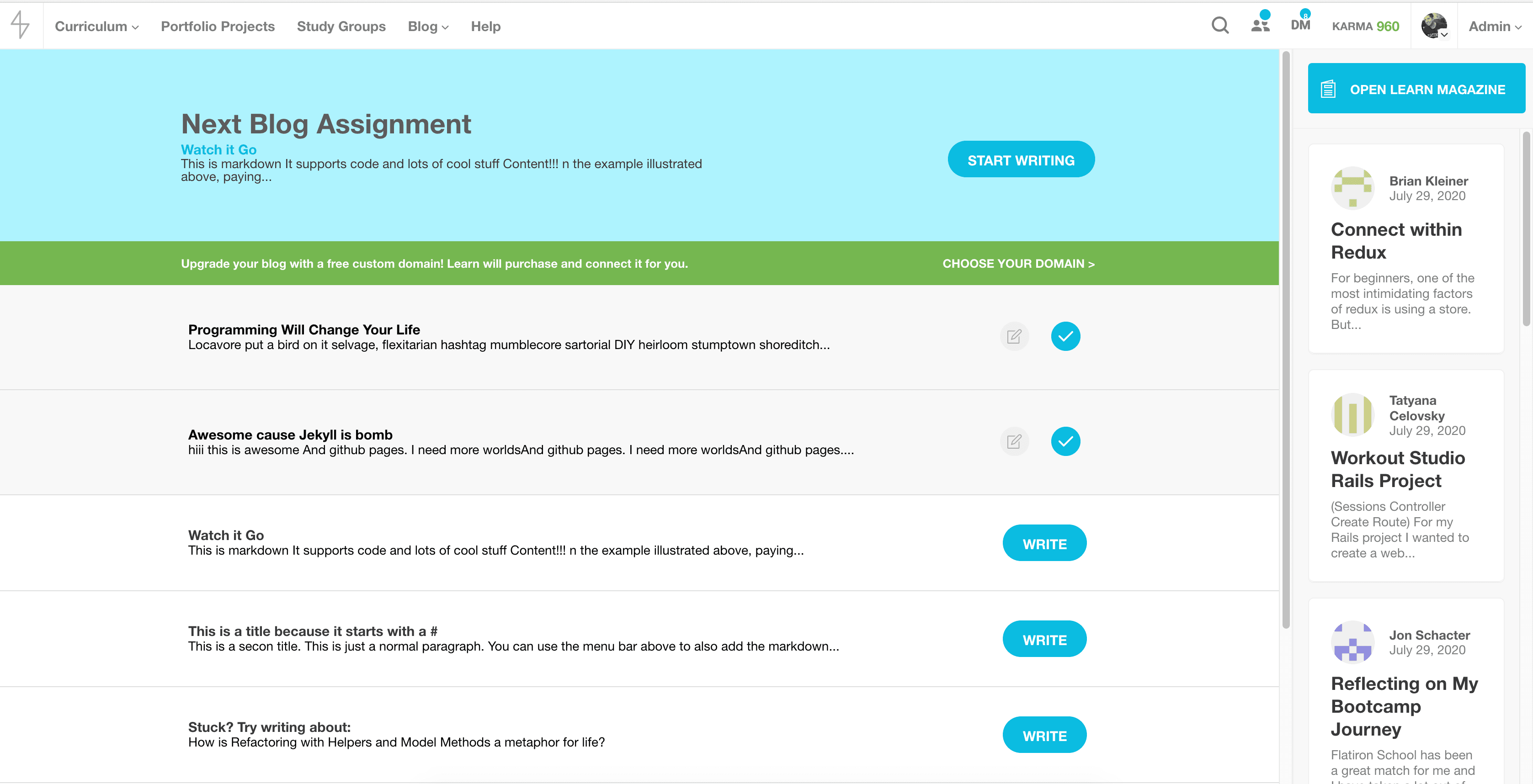
This was an asynchronous social learning implementation. Every day there was a new magazine you could read composed of your fellow students' (and your's) blog posts. You got to know others and learn from them without having the interaction occur in real-time. Each post corresponded to a topic or lesson so that we could also surface the posts on the relevant lessons, giving you a more targeted opportunity to learn from someone else's writing.
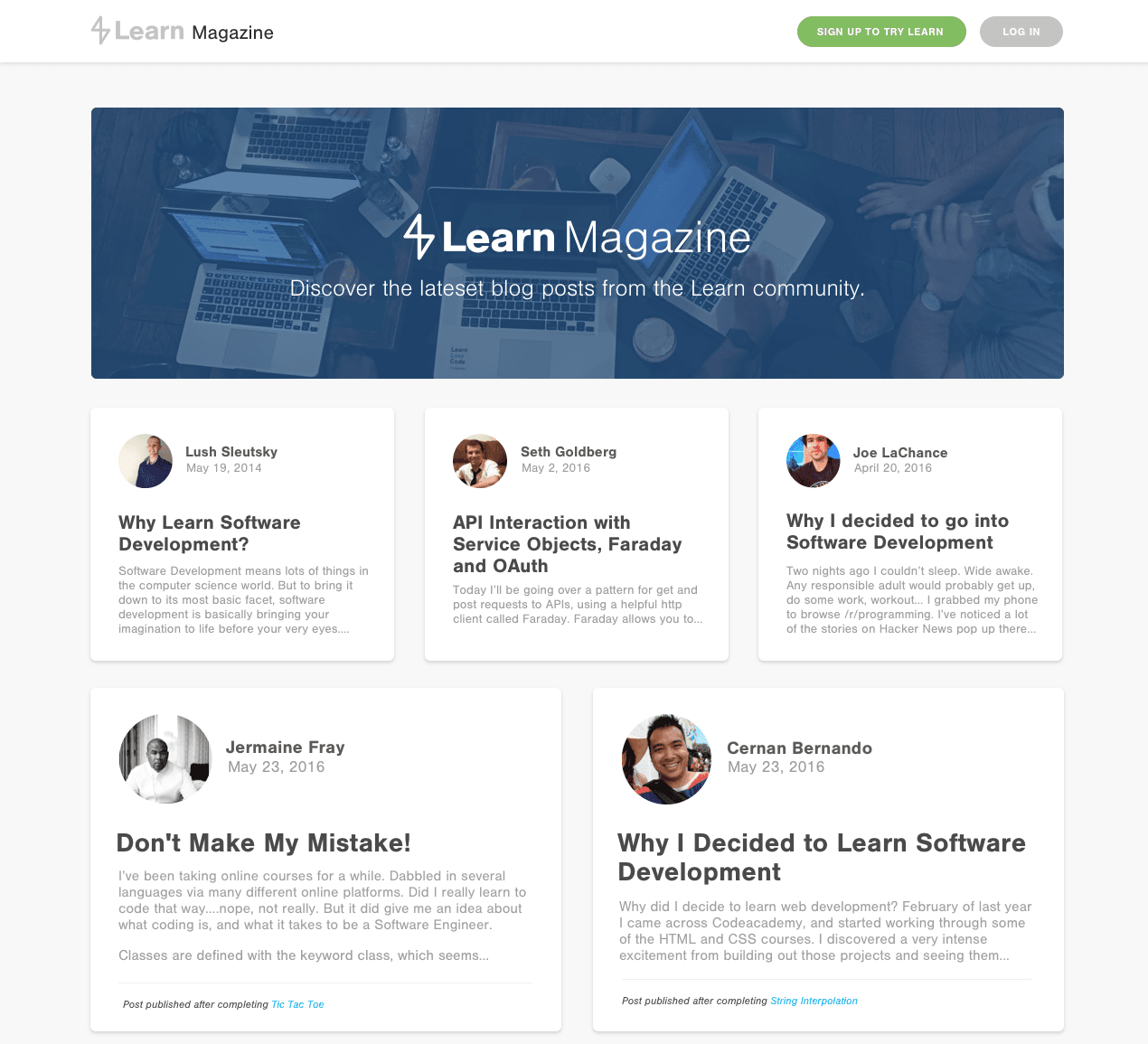
An Online Campus
Together these features made learn special. They made learning on the platform fun and social. They meant the platform got better the more people used it. They meant that the platform inherently scaled because it leveraged technologies of scale. The classroom is the wrong thing the model when building learning platforms, replicate the campus.